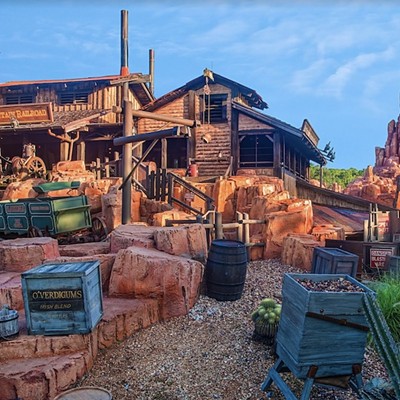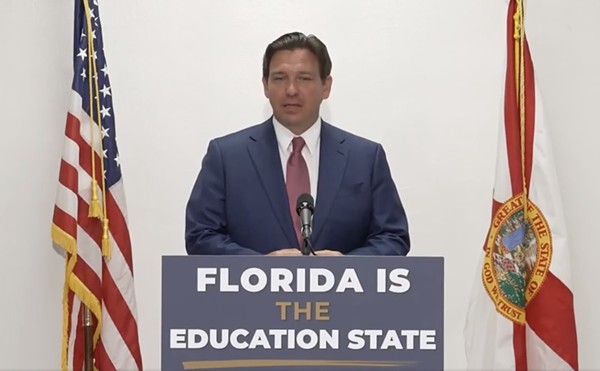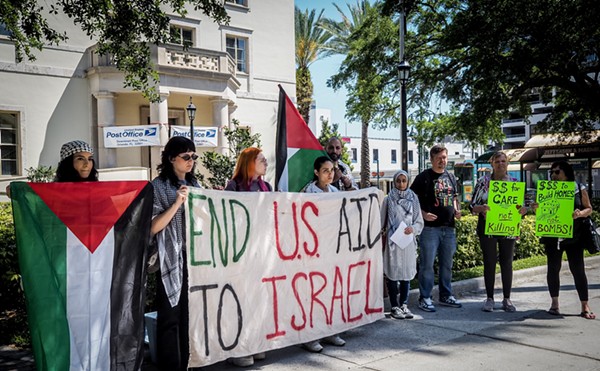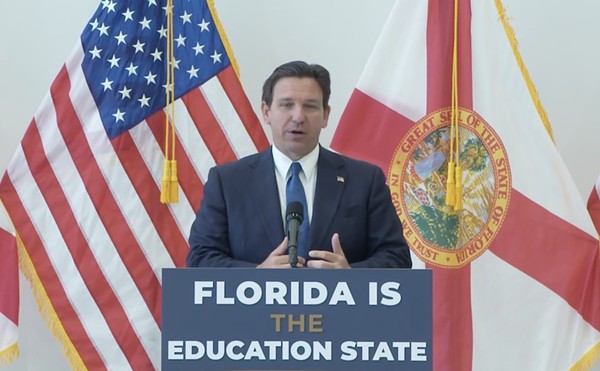Everyone knows the epicenter of Disney's domain lies in Lake Buena Vista, several miles southwest of Winter Park's stately streets. Even a self-confessed Disnerd like myself has likely driven through the intersection of U.S. Highway 17-92 and Lee Road without ever noticing the marks of Walt Disney's legacy lying to either side. On the west side of Orlando Avenue is the former site of the Park East movie theater, where the last film Walt finished was screened Feb. 2, 1967. On the east is Winter Park Village, one of the area's most successful examples of New Urbanism, an architectural philosophy that aims to integrate recreational, residential and retail in a single property. I've passed them both countless times, but it wasn't until attending a lecture by author and urban planner Sam Gennawey that I finally understood the edifice that metaphorically exists between them – Progress City, the symbol of Walt Disney's last, lost dream.
Gennawey didn't set out to be a Disney expert; he's an urban planner by profession who "helps communities dream their future" by developing comprehensive growth-management plans. But growing up in Southern California, Gennawey spent hours at the original Magic Kingdom examining the model of Progress City displayed at the Carousel of Progress. Originally constructed for the legendary 1964 New York World's Fair, this 69,000-square-foot model was a hyper-detailed miniature city of the future built on a scale of 1/8 inch to 1 foot.
The memory of that model and the utopian mode of living it envisioned stuck with Gennawey through his career, until an encounter with Disney author Len Testa (one of my collaborators on The Unofficial Guide to Disneyland 2012) encouraged him to start writing about theme park history from an architectural perspective. I've enjoyed the "SamLand" editorials he's contributed to Al Lutz's influential website MiceAge for several years, so when I heard Gennawey was making a rare Orlando-area appearance early last month in advance of his speaking engagement at Disney's Imagineering department, I was all ears. As a result, on May 3, I got to hear an enlightening lecture about how Walt's failed fantasy ended up influencing the way we live now.
It may sound odd today to hear an entertainer like Disney described as a sociological visionary, but Walt had his share of intellectual advocates in his day. Urban design pioneer James Rouse said, "The greatest piece of urban design in the United States today … is Disneyland"; recently deceased science-fiction titan Ray Bradbury repeatedly urged his friend Walt to run for mayor of Los Angeles. (Walt's alleged retort: "Why would I want to be mayor when I'm already king?") Throughout his career, Disney reinvented the fields of animation, documentary filmmaking, color television, office park architecture, environmental development, arts education and even the Olympic opening ceremonies. As Gennawey says, Walt was "not a great inventor, but a great synthesizer of ideas," and his final idea – sketched out on the ceiling tiles of his hospital room as he lay dying – aimed to reimagine the fundamental relationship of cities and their occupants.
Progress City was a direct progenitor of EPCOT, the Experimental Prototype Community of Tomorrow that Walt pitched to Florida's legislators in his final film appearance. Far from the vaguely futuristic Six Flags fused with an international shopping mall that currently bears its name, EPCOT was intended to be an actual city where short-term residents (no permanent owners, to avoid pesky issues of democracy) would live in a showcase for American industrial innovation. There was never really supposed to be a dome over the whole resort (as old-timers may remember from early erroneous news reports) but an air-conditioned arcade would have covered the commercial center. Inhabitants would have enjoyed pollution-free PeopleMovers to take them from their front door to nearby work and school, with electric cars available for occasional longer trips; delivery trucks, debris and other unaesthetic necessaries would have been ingeniously hidden from view. Disney's ambition embraced ideas like sustainability and green-belt preservation decades before their time.
Gennawey's slide-assisted lecture touched on far too many topics to document here, so if you're interested in the subject, I highly suggest reading Sam's scholarly Walt and the Promise of Progress City (Ayefour Publishing), which dissects this doomed project in exacting detail. The insight into the original vision of EPCOT is invaluable. Today, you can see just a fragment of Walt's vision in the sliver of the Progress City model preserved along Walt Disney World's Tomorrowland Transit Authority track, and in the pseudo-city of Celebration, whose car-centric design violates most of EPCOT's ideals. I owe thanks to Gennawey for finally giving me a glimpse of what Walt's city of tomorrow might have been.


















